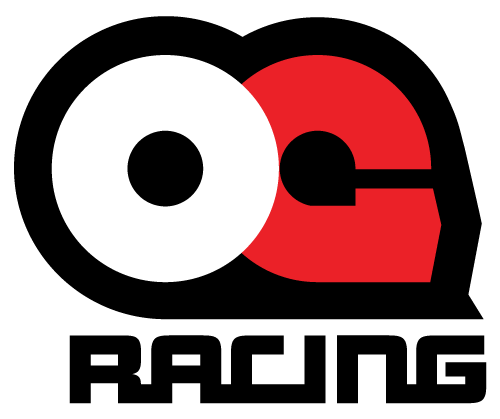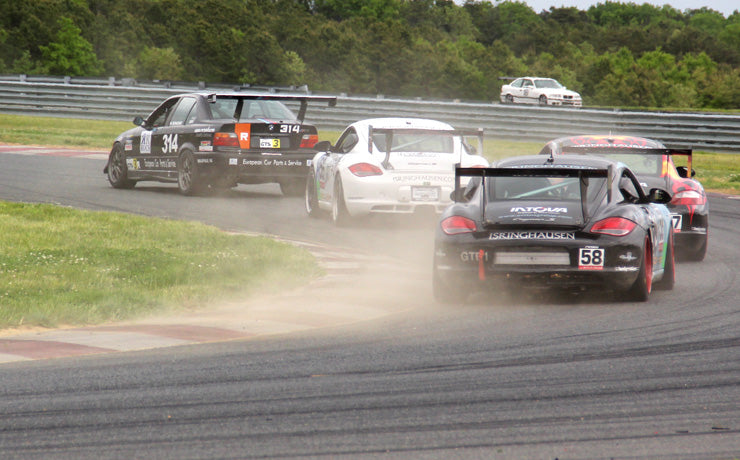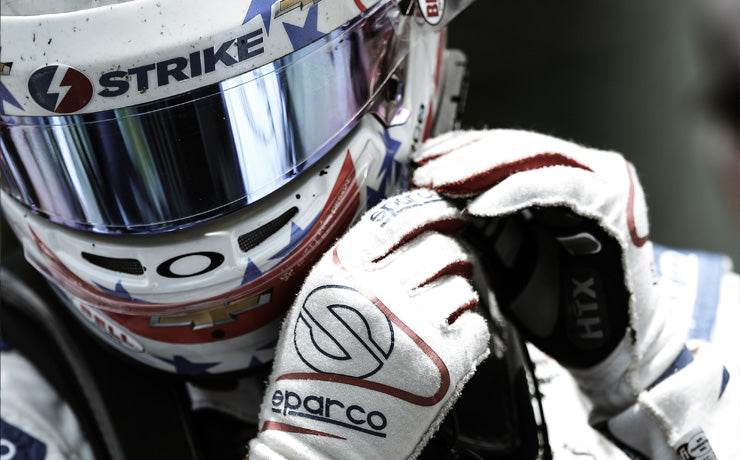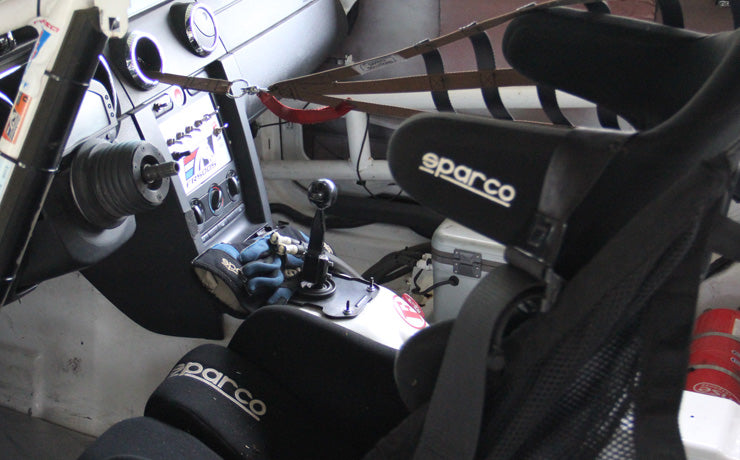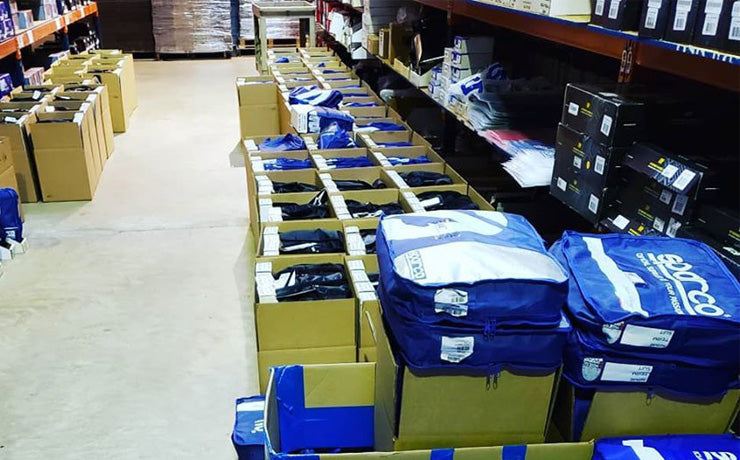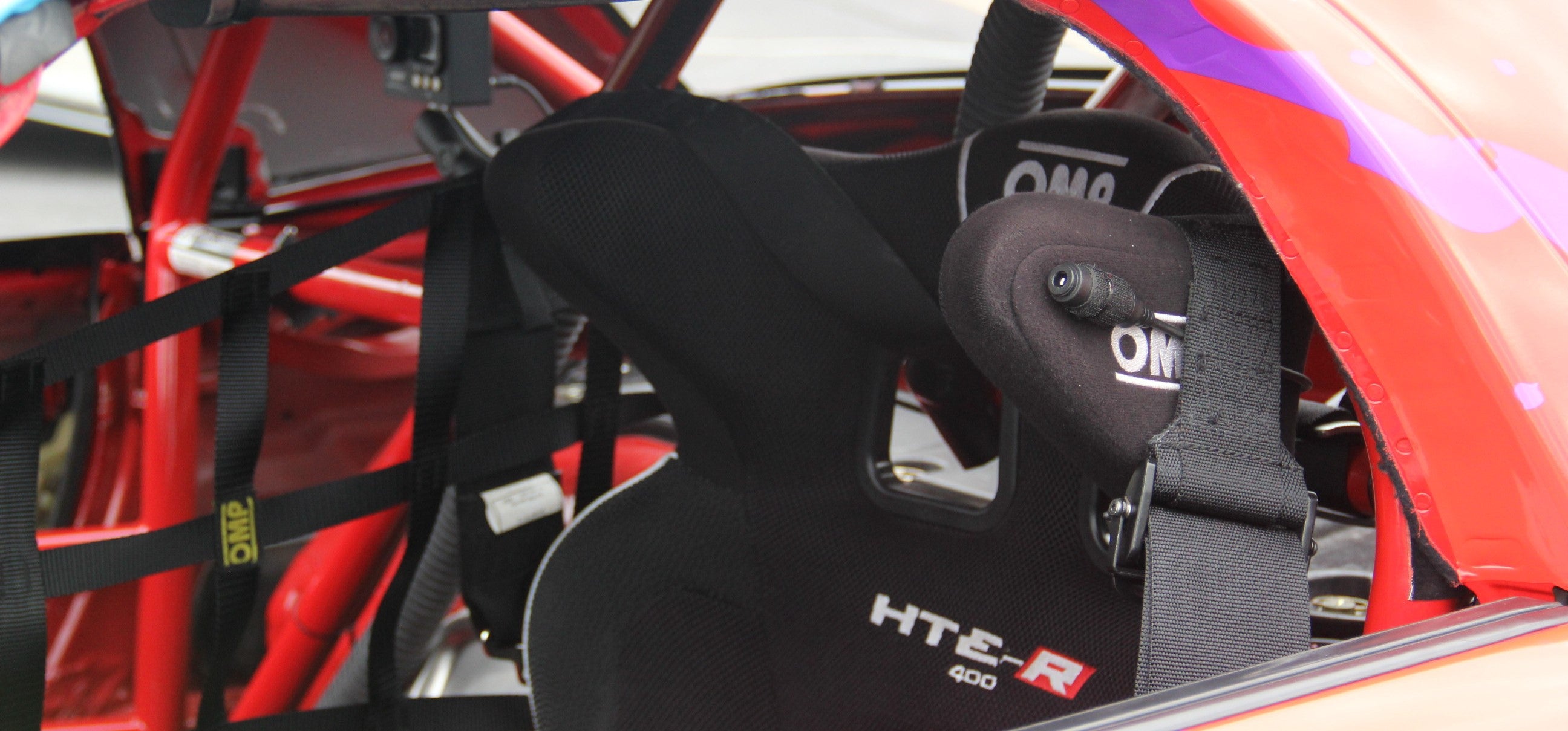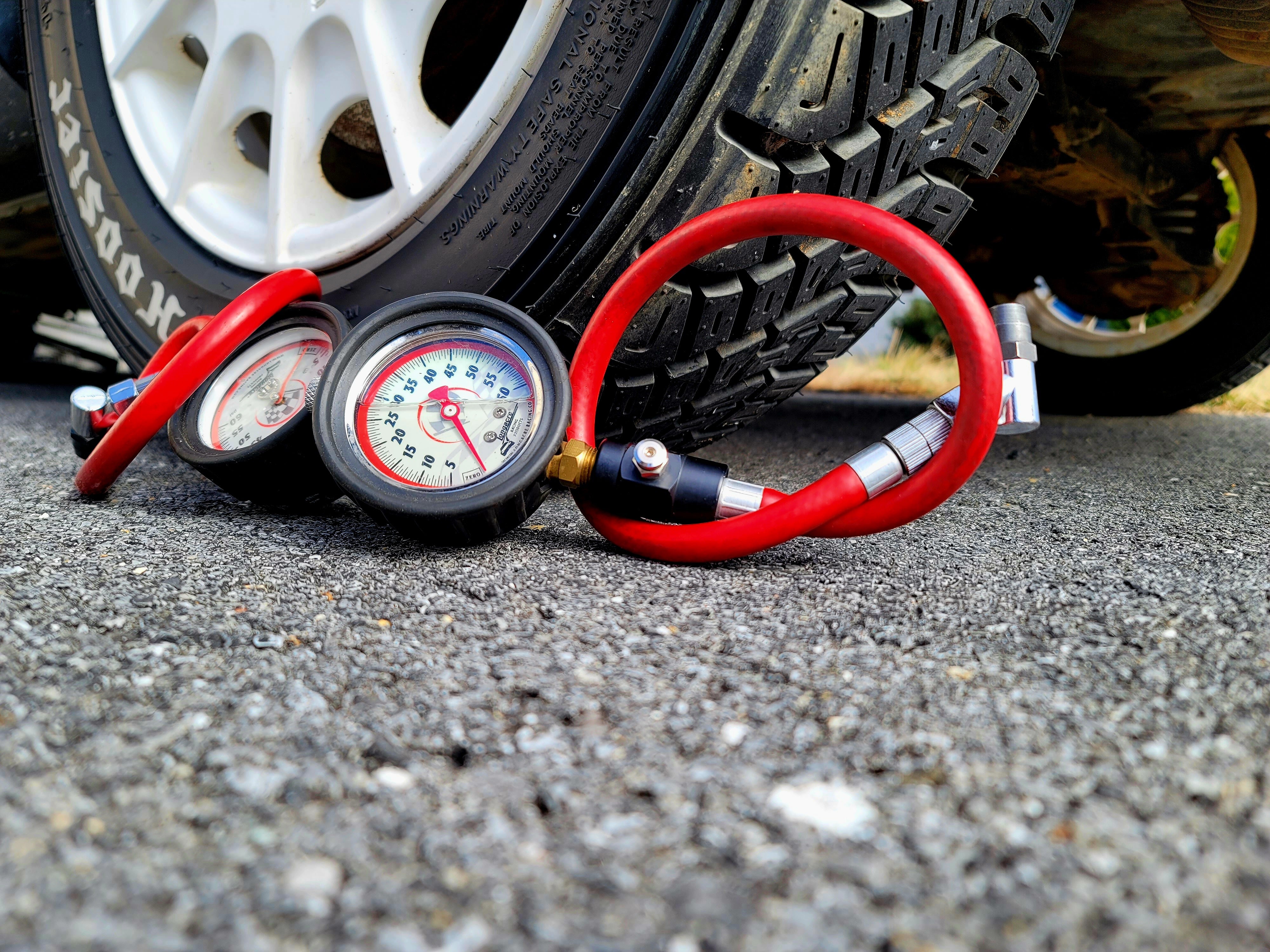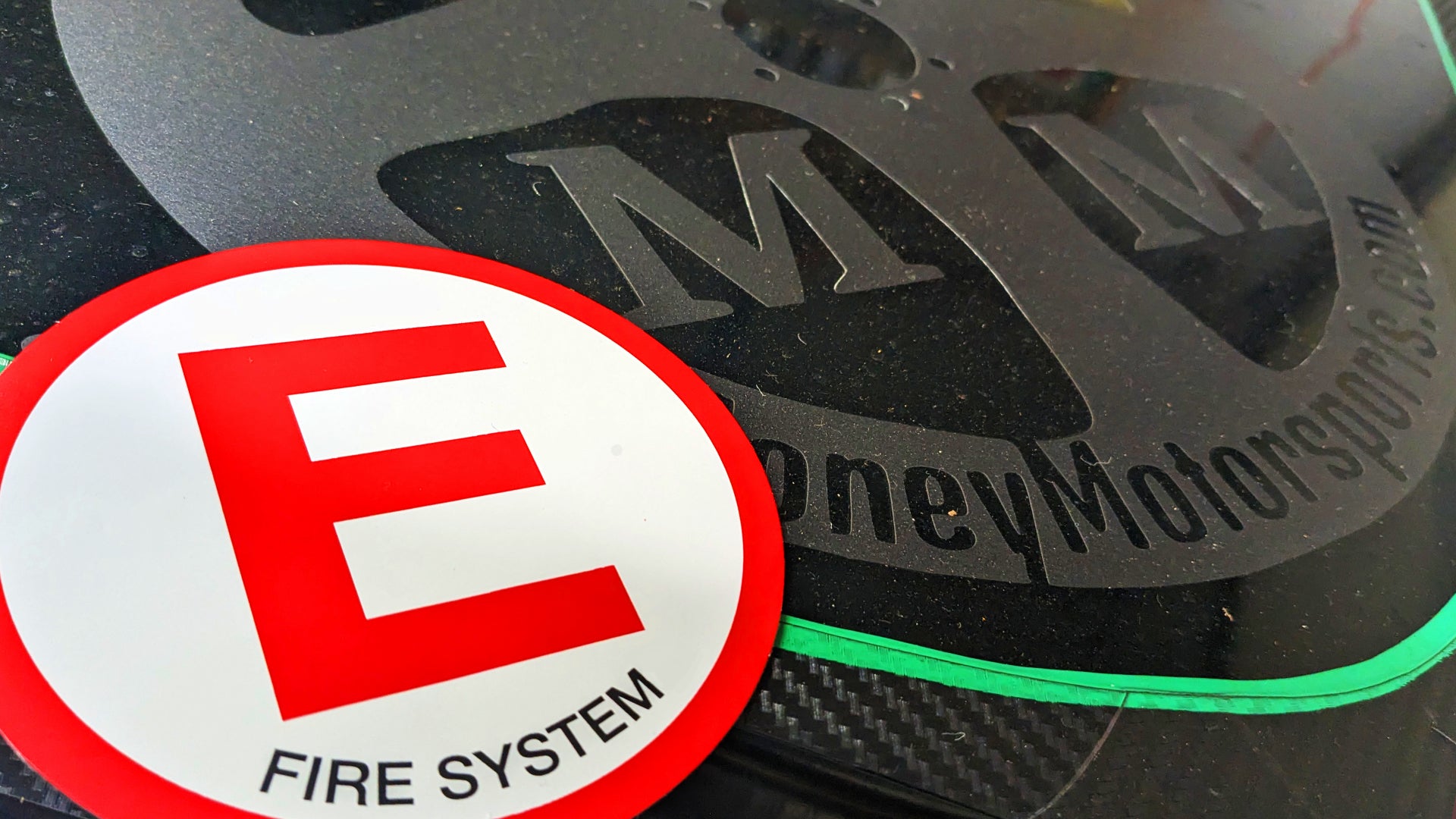
A Budget Racer’s Fire System Shopping Guide – How to minimize expensive maintenance and avoid being surprised at Tech Inspection this year
We are excited to share this blog written by Jim Tramontano from No Money Motorsports, he does a excellent job of describing his process of selecting a fire system. Enjoy!
Fire Systems are a hot topic. Show me an article about fire systems and I’ll show you several paragraphs talking about their importance. We can preach and debate endlessly about the need for fire systems: Their importance, how often they get used, how much they help, etc. While every other fire-system adjacent article speaks to that, I am writing this to help the Budget Racer navigate the landscape, get a bit safer, and get compliant, without destroying their race effort’s budget.
While handheld fire bottles were long accepted as adequate in-car protection, more and more sanctioning bodies are requiring full Fire Systems in race cars as the years go on. For the 2023 season, NASA is requiring an SFI or FIA rated fire system for all race cars. Most other clubs have similar requirements, and I’d expect any that don’t to also adopt these same standards in the next couple years. Requiring a system is one part, but that SFI and FIA rating requirement complicates things a lot.
(Researching for your first track day? No worries, Fire Systems are NOT required for HPDE. This article is geared to the Licensed Wheel to Wheel racer. Find out more about track days HERE).
While I’ve long run a fire system in my Spec Miata, It was purchased from a buddy who never installed it and had expired before I even installed it. Ambiguous rules meant I was able to run with the expired system without issue (Especially since I also carried a compliant handheld bottle). Either way, I've been long overdue for an update before the 2023 season.

I called my friends at OG Racing and spoke at length with David Bowen who was extremely helpful (and patient) as I gathered info. It turns out, a lot of what I had heard in the paddock was wrong!
While an added layer of protection is a fantastic thing, fire systems put a serious extra strain on the low-budget racer. Many of us race slow cars and maintain factory fuel systems, which put us in a very low (Though certainly not nonexistent) risk category. It can be frustrating to pony up a few hundred dollars on something that doesn’t make you go faster or get on track more. Realizing that also means paying a couple hundred dollars every two years for maintenance is an even bigger pain. However low, the risk of fire is still there, and a fire system does indeed cost significantly less than a lengthy hospital stay. The bonus is that little of extra peace of mind knowing the system is there and maintained.

This post is to help you pick a rulebook-compliant fire system and go or keep racing… On a Budget.
I’m writing this as I shop for my own system. The protection of a fresh system is nice, but a large concern was picking the right system that wouldn’t leave me surprised by service and recertification costs down the road. I looked around and ran the numbers to find how to get compliant on a budget.
*Disclaimer 1 - Racing has its risks, things like fire systems are there to help protect you if there is a fire. Consult with real fire system experts for any actual technical and system planning advice.
*Disclaimer 2 - CHECK your Club’s rules for specifics on requirements, Consider this post me speaking broadly about requirements and rules. Rules change often and lots of changes have been happening lately so look for recent updates.
I need a fire system to be legal for racing, how much will this cost?
Getting a FIA or SFI rated Fire System begins around $400 and can go well into the thousands. Any certified system you purchase will be good for TWO years before the bottle needs service at a certified/approved facility (Typically one of a few certified racing speed shops, not your neighborhood firehouse). Have a “self service” or “service free” system? Sorry, that won’t meet the SFI or FIA guidelines.
Why the range of costs in systems?
As all things in racing (and life) there are budget options with big compromises, starting around $400. Then there are high-end options, Starting around $700, where the only real compromise is the price you pay to own and maintain it. Deeper in the article we’ll discuss some available features and different suppressant materials.
Don’t get Surprised by the HIDDEN Costs of maintaining a fire system!
Fire systems will require being professionally serviced Every Two Years, dates will definitely be checked during tech inspection. Expect to pay somewhere in the $125-350 range for a service. Bottles also require hydro testing after 5 years and have a maximum age of 6 or 10 years (keep reading to decipher which is which)
What about “X” race car fire system that doesn’t carry a SFI or FIA rating?
I’m sure there are plenty of great non-certified systems out there that can adequately provide all the fire protection we need. However, for the ease of legislation, enforcement, and insurance (And Pleasing Sponsors?): NASA requires fire systems be SFI or FIA certified (SCCA currently recommends but does not require them), which rules out a lot of popular systems like Coldfire.
(The NASA wording is: A fire system meeting SFI specification 17.1 or 17.2, or those listed by the FIA on Technical List No. 16 with a visible SFI or FIA certification decal is required.)
To be legal, your system will need to be one carrying SFI or FIA rating, and the biannual service that goes with it.
Should I shop for SFI or FIA?
If you read my post about racing harnesses, you may have heard my frustration with SFI’s obnoxiously short belt service life of 2 years vs FIA’s 5 years (spoiler: SFI and FIA belts are usually all the same materials). WELL, my buddies at SFI are at it again - Not quite as bad but still a shorter life. While FIA bottles can be used for 10 years, the SFI only allows a max life of 6 years. So if you’re long-term budgeting, realize you’re buying a new SFI bottle while a FIA bottle still has 4 years of life left.
This leads me to repeat my recommendation from Harnesses: Don’t consider SFI rated fire systems if you are on a budget, stick with FIA.
What about the ESS System that can be purchased with a SFI label, but are also advertised as self-rechargeable with available kits?
Unfortunately, no. While these kits are sold as self-recharge, in order to get and keep the SFI certification - A professional service is still required. While ESS trusts you to inspect and charge the system, the SFI (and by extension, NASA) does not.
Before researching this story, I heard from a few people in the paddock that these types of systems were legal and saved from the costs of frequent certification. While many were allowed under the old NASA ruleset, 2023’s changes (especially the line “All systems must be installed, maintained, and used per manufacturer’s instructions.”) eliminate the possibility.
What is the difference between the major types: AFFF and Novec?
AFFF (and it’s newer cousin: ABF) is the budget suppressant- An foam/liquid suppressant. It works well to knock down fires but it’s messy and very corrosive. The story is: After two years the liquid starts to gunk up and may clog the pickup tube - making it less reliable. The suppressant is water based, so it will freeze if left out in freezing temps (I bring mine into my warm basement every winter). A biennial recertification includes emptying and filling with new material, but you’re stuck paying for it every two years. Budget around $150+shipping for that.

Novec Is the popular new “gas” suppressant. The cheaper Novec systems start around $700 vs the ~$400 for AFFF. When triggered, it comes out as a gas that knocks down fire (By removing heat, or something), knocking the flames down so you get more time to escape. The biggest benefit is that it leaves no mess, the gas dissipates without a trace. Meanwhile, when AFFF is triggered it creates a huge (corrosive) mess. When servicing Novec Systems, instead of replacing the fluid like AFFF… the gas is simply removed, filtered and reinstalled after the bottle & parts are inspected.

Novec seems like the best choice, the question left: Is it worth the extra cost?
The Novec systems are smaller, lighter, and leave no mess after being triggered. A large percentage of fire system discharges are done accidentally, many pulls are also from what ended up being a minor fire, so simple (zero) cleanup is a huge benefit. However, you’re looking at a cost nearly double to purchase. When I called around for service/recertification price quotes I heard anything from “similar cost” to AFFF to “2-3x higher than a AFFF service”. While the Novec liquid (It is liquid in the bottle but releases as gas) is filtered and returned to the bottle in service, some naturally evaporates during that process, costing what I’ve heard can be upwards of $300. Naturally, with the Novec liquid being so expensive, costs to replenish a discharged system are super high.
The benefits of no cleaning were certainly enticing, but the chance of my system being discharged is still quite low.
I’m making an uneducated guess here, but with the differences in suppressant materials it seems like Novec systems should function fine for much longer than their 2 year certification window. Hell, even my old AFFF bottle functioned fine when I popped it off “for science” at a whopping 9 years old. IF the certification window for Novec is stretched to something like five years, the systems would be closer in total overall costs over 10 years, tipping the scales towards Novec. Unfortunately, I don’t see anything like that happening.
Once I can get the bottle to a certified place: What does the service cost?
There’s a lot of “if’s and “but” ’s here:
A baseline service costs around $100, but there are some seals and other parts that usually get replaced. I’ve heard an “average” service is $140 for AFFF. For Novec I’ve heard big ranges from $150 to (and over) $300. I have to expect (and would certainly plan for) the higher end of that range.
Any of the places I spoke with said bottles are usually serviced and on their way home within 24 hours of receipt. All did include a caveat that service could be delayed by a rush and service backlog or missing parts, but they were confident this is not something that happens frequently (or, really… at all).

How about supplies? Are systems available?
Everyone I spoke with was confident that the current stock of on hand systems will be plenty to handle the typical rush of late winter orders. That said, Installation is simple and straightforward but time consuming. I didn’t want to be the one rushing to install the week before my first event, so… I ordered mine in January for the upcoming season.
Which system did I end up buying?
At the end of all my research, I was deciding between sticking with the same type of SPA AFFF System I had, Making a slight upgrade to Lifeline’s new ABF (Similar to AFFF but slightly updated), or trying out a fancy Novec system. The overall costs between the systems I was considering wasn’t overly huge, but the extra cost of servicing Novec (And the concerning ranges in costs I heard) ruled it out.
The AFFF system I had previously was fine. But now old and useless, I decided to see if it would still work. Despite being 6.5 years beyond its required service date, it fired off just fine. While I will be keeping whatever system I choose “in-date”, it did make me feel good that they may still do fine even if I get sloppy… though I don’t love the 2 year window.
However, the ABF system from Lifeline is an attractive third option. Just a few dollars ($30) more, it gets an “updated” (promised to be more effective while being less hazardous) suppressant material. The key benefit for me is the bottle size: At 2/3rds the size of AFFF, it takes up less space on my passenger floor where space is a premium (when giving passengers rides). Also with a car right on the edge of my minimum weight, shaving even just a couple pounds is welcome.
In the end, I bought the Lifeline ABF system from OGRacing. With service being nearly the same cost (Just another $10 or so over AFFF) and the $30 price difference spread over 10 years, I decided the minimal cost difference was well worth the benefit of smaller size and updated material.

Despite my initial apprehension to purchasing and paying to maintain a full system, Over 10 years, I’m only adding about $100 to my cost for each season. In the grand scheme of even the most shoestring budget possible, that’s still a very small percentage. You could say it’s money well spent to add an extra layer of protection.
Written by: Jim Tramontano Founder of No Money Motorsports
